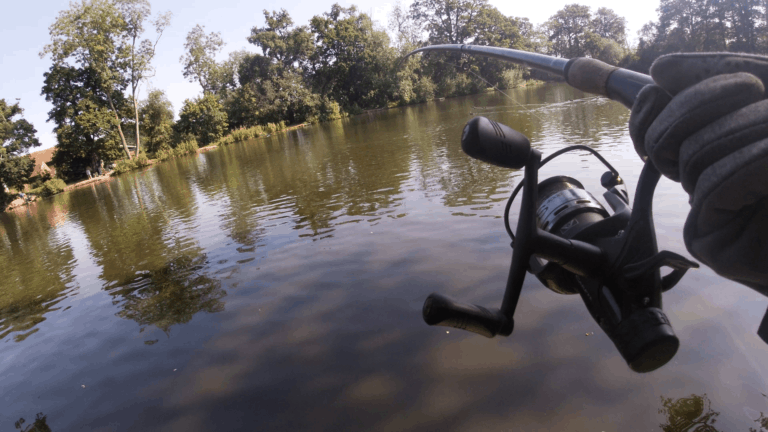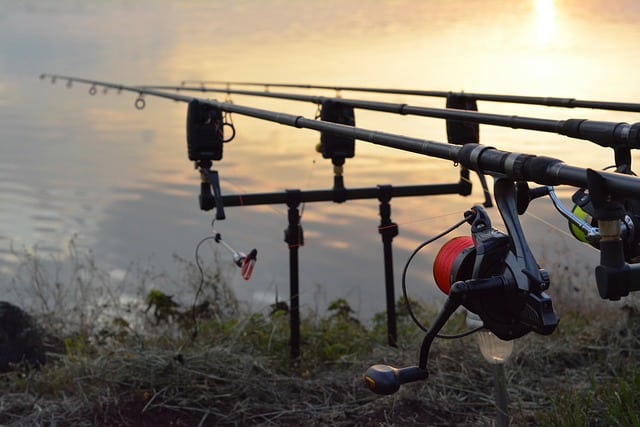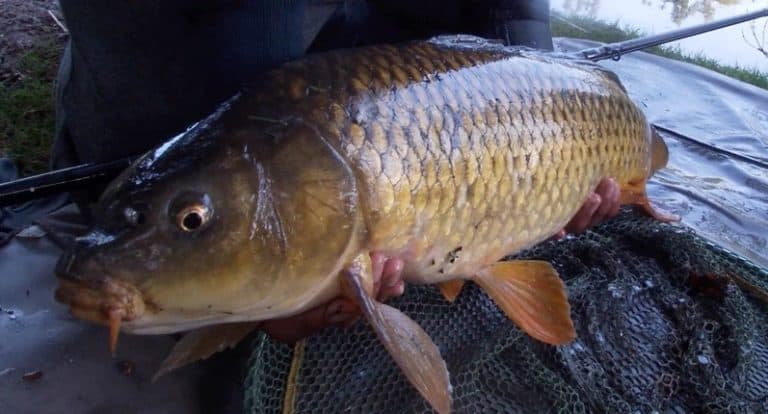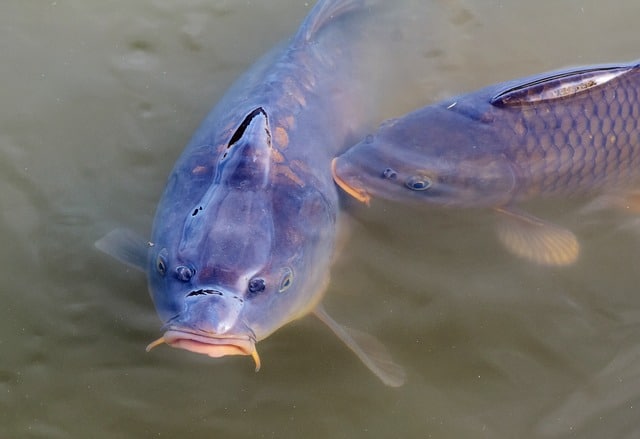How to unhook a carp – improving carp care

As fishermen, we’re always trying to learn new ways of increase the number of fish in our landing net, as well as constantly trying to break records, however sometimes not enough thought is given to the fish during the unhooking process.
Majority of the time when a fish gets injured its not intentional, however it’s not uncommon. In this article we will go through a few different tips which should help you catch and release safely.
It’s astonishing the number of anglers who don’t realise what they’re doing and end up harming the fish. The main things to remember are:
- Lift the fish correctly
- Use a landing mat to remove the hook
- Treat Wounds
How to lift the fish
When lifting a large fish out of the water its best to use a sling, this will support the fish when being transferred on to the unhooking mat. Here is the one we use:
Our favorite sling – Trakker Sanctuary Retention Sling XL V2 (check price on Amazon)
Net – NGT 42″ Carp Fishing Landing Net
After your fish is in the landing net it’s essential you do things calmly. Unscrew your net from the handle and slide the sling underneath the carp. Take your time to ensure the fish is in the sling securely.
When you are satisfied that the carp is securely in the sling, it’s a good idea to check the fins are flat against the body, the will prevent any unnecessary injury.
The best way to do this is by putting your hand inside the sling on either side of the fish to check the fins are in the correct position.
When you are satisfied zip the sling up and gently lift the fish out of the water, don’t forget, you also don’t want to injure yourself so get some help of a fellow angler if you’ve caught a monster.
Your landing mat should have a substantial level of cushioning to support the fish. After transferring the fish to the landing mat open and remove the sling. We recommend a large landing mat as fish often thrash around once removed from the water.
Unhooking
So you’ve transferred the fish on to unhooking mat, it’s a good idea to have bucket of water near by, this will ensure the sun doesn’t damage the scales as well as allowing water to pass through the gills.
At his point you should be ready to remove the hook, it’s important to get this risk to minimise the risk of injury.
Start of by locating the hook, then gently use your fingers to apply pressure to the eye of the hook whilst rotating it out. This should mean the hook smoothly slides out, take your time, it can be slightly tricky when the hook is lodge at an awkward angle. Don’t yank and tear, it could increase the risk of infection.
If you discover the hook is deeply lodged in the carps mouth then using a pair of forceps is recommended. When using forceps implement the same technique as when using your hands. This will ensure smooth retrieval of the hook and as well as minimum damage to the carps mouth. Grip the forceps by the shank of the hook and apply the same rotating pressure until the hook pops out. In the worst-case scenario, with nobody to help you, its best to just cut the hook and far as you can and release the fish.
If at any point during the process the fish starts to thrash and become agitated, cover its eyes with either your hand or a damp cloth, this should calm it down almost instantly. Repeat this process as many times as you have to, there’s nothing worse than trying to remove a hook from a flapping fish. This will almost always result in more damage being done to the carp.
Here are some things to consider whilst unhooking:
- Remember if at any point you need to leave the fish it’s a good idea to put it back in the sling and let it sit in the water.
- It’s a good idea to do this if a land a carp during the night.
- To prevent hook injuries, use line/hooks that are proportionate to the fish your trying to catch, the photo below is a fish we caught from a commercial fishery which had clearly been skull-dragged by match anglers using large hooks and heavy line. It’s unfortunate to see fish like this however shows the harsh reality of what goes on.
- If you come to contact with an injured fish apply some carp treatment with a cotton swab around the area. This will ensure the wound doesn’t get infected and the fish can continue living a healthy life.

Weighing
When you’re weighing a fish, you want to take the same precautions you did when you were lifting it out of the water, make sure the fins are flat against the body of the fish. Next, hook you’re scale to the handles on the sling and lift the fish slowly, getting a friend to read the number on the scale can sometimes help. If you’ve caught a real monster, a weighing pole will make life much easier however we find that this weight scale works fine for the majority of our carp:
Digital Fishing Electronic Weighing Scale (check price on Amazon)
Release
When everything is complete, your fish has been weighed and photographed it’s time to release. There are a couple of different ways for doing this depending on if you have taken pictures in the water and the size of your fish.
Releasing it using the sling is a sensible option. To do this open the zips of the sling and gently help the carp out back into the lake, it’s perfectly normal for a fish, not a swim away instantly so don’t worry and just give it some time.
If you are holding the fish you may need to do it slightly differently. Support the fish from under its stomach and hold it underwater. When you feel the fish trying to pull away let go and let the fish swim off.
It’s so important that we take care of our carp, especially as so many get injured. They give us so much joy and pleasure, the least we can do is put them back how we found them. Following these simple tips will ensure you release your fish back into the lake in tip-top condition.
If you found this article useful then make sure to check out some of our others @carpreviews.co.uk, best of luck and tight lines.






